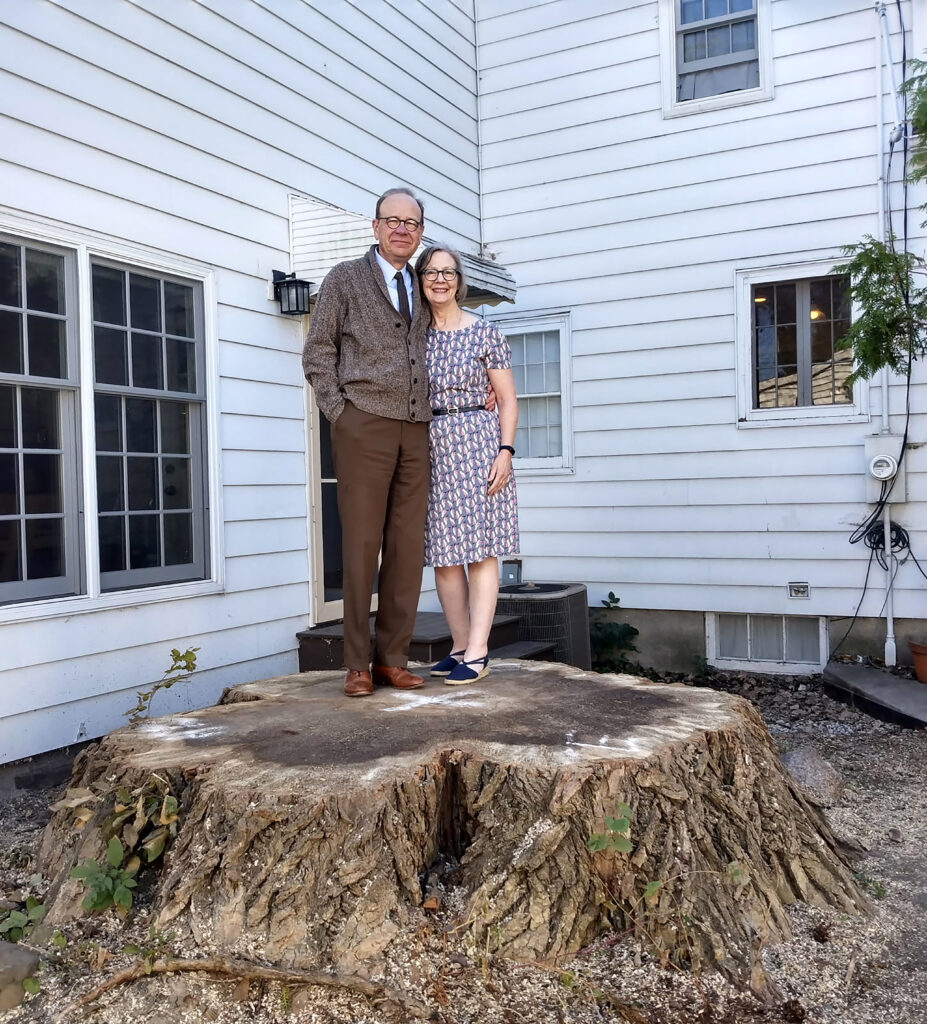By Christina Capecchi
Twenty Something

This is the story of a tree. An Eastern Cottonwood soaring 108 feet high, stretching its arms across three yards and anchoring the entire street. It was a defining feature of its St. Paul, Minnesota, neighborhood near Nativity of Our Lord Catholic Church.
“Oh, you’re the people with the tree!” locals would say when they met John and Dia Boyle and determined which house is theirs.
Sixty-something empty nesters, John is a professor of Catholic Studies at the University of St. Thomas in St. Paul, and Dia is a writer. She recently published a book titled “The Thoughtful Home.”
The cottonwood had been part of that equation, one reason she loved her little home. She’d write at the table and admire the tree. “We liked the shade and the beautiful craggy bark and the squirrels and nuthatches scurrying up and down and how it filled the view from our library window,” Dia said.
Everyone loved the tree.
But it had to go.
Last June a branch fell, knocking out their electrical box, gouging the siding, shattering a window and shredding a corner of the neighbor’s roof.
The tree posed an unmistakable danger.
So the Boyles hired a tree-removal crew and set a date, a Tuesday in mid-September. The Sunday before, the couple hosted a goodwill party in their backyard so neighbors could toast to the cottonwood. Dia served champagne, beer, cookies and nuts. It was a chance to do a little public relations, expressing their regret and reviewing logistics (the street would soon be blocked off and cars must be moved).
Removal of the cottonwood was the topic of conversation all week. Come Tuesday, spectators gathered for the main event, bringing coffee mugs and lawn chairs. People would walk by and stop to watch the crane and chat. Folks from the other side of the alley were observing from their elevated decks and upper floors. A neighbor invited the Boyles to come watch from his deck. They had never been in his yard before. It was the most they’d ever socialized with their neighbors.
“What I had seen as potentially upsetting to neighbors turned out to be a really good bridge to better connections,” Dia said.
After three days of work, the cottonwood was gone.
Suddenly, Dia could see the sky. Comings and goings of neighbors. Birds fluttering around their feeders. Sunshine. The cottonwood left room to expand Dia’s garden, and this spring, for the first time, she’s planting vegetables that need sun.
The change she had dreaded, it turned out, made her happy.
The tree has become a metaphor. Dia references it when friends face upheaval — a change of mind, of address, of heart. She counsels them lovingly.
When the winds of change blow, look up and lean into the Creator of all. Trust that he is guiding you, protecting you, loving you. Trust in the good being done beneath the surface.
Take stock in our identity as Catholics: We are Eucharistic people. In the midst of uncertainty, we are fed and fortified by the body of Christ. As the word Eucharist suggests — its meaning, a guidepost — we offer our thanksgiving. “In all circumstances, give thanks,” St. Paul urges (1 Thessalonians 5:18).
Be gentle with yourself. Make peace with the peculiar reality of change: that two good things aren’t mutually exclusive. Dia had loved the tree — and she loved its absence. You can love your old house and your new one; you can love your single life and married life — in different ways, for unique reasons.
Allow room in your heart to be surprised. It could work out like the cottonwood. The change you’ve feared just might broaden your view, letting you see more birds and beauty, giving you more space and sunshine, making your garden grow.
Christina Capecchi is a freelance writer from Inver Grove Heights, Minnesota.
